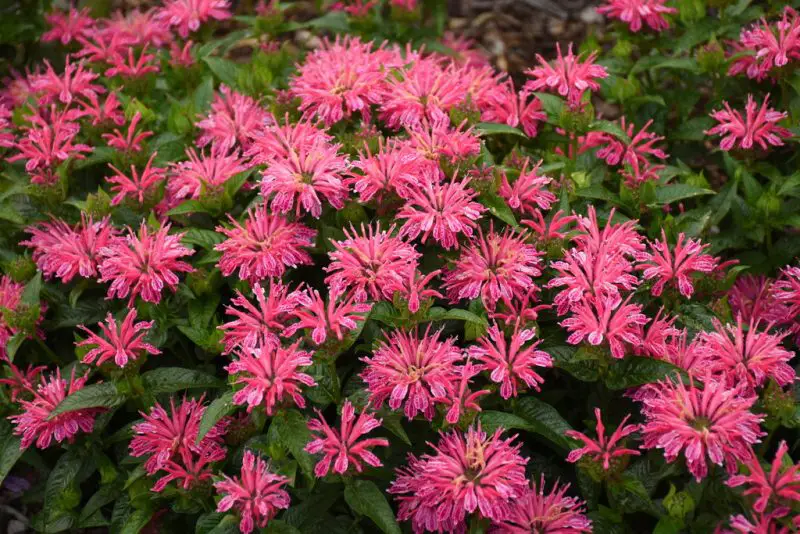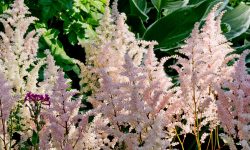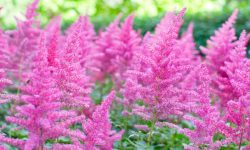Monarda, commonly known as bee balm, is a vibrant perennial prized for its colorful blooms and aromatic foliage. It attracts pollinators like bees, butterflies, and hummingbirds, making it a valuable addition to any garden. Understanding how to grow monarda effectively ensures long-lasting, showy flowers that enhance garden aesthetics throughout the season.
Successful cultivation requires attention to sunlight, soil quality, spacing, and watering. Proper care prevents common issues such as powdery mildew, weak stems, and short-lived blooms. With the right techniques, gardeners can enjoy continuous flowering, lush foliage, and a thriving ecosystem in their backyard. This guide provides detailed, expert tips on planting, maintenance, propagation, and seasonal care, helping gardeners achieve healthy, vibrant monarda plants year after year.
Choosing the Right Location and Soil for Monarda

Selecting the proper location and soil is critical for growing healthy monarda plants with vibrant, long-lasting blooms. Monarda thrives in areas that receive full sun, ideally six to eight hours per day, although it can tolerate partial shade. Adequate sunlight promotes strong stems, abundant flowers, and robust foliage. Choosing a site with good air circulation helps prevent common fungal problems such as powdery mildew, which can affect leaves and reduce flowering potential.
Soil preparation is equally important. Monarda prefers moist, well-drained soil rich in organic matter. Heavy clay or sandy soils can limit growth and reduce bloom quality, so amending the soil with compost or aged manure is recommended. Testing soil pH can ensure optimal conditions, as monarda grows best in slightly acidic to neutral soils, typically with a pH range of 6.0 to 7.0. Proper drainage prevents waterlogging, which can damage roots and increase susceptibility to disease, while organic matter retains moisture and provides essential nutrients for sustained growth.
Spacing between plants is another key consideration. Monarda spreads moderately and can form dense clumps over time. Planting them too closely increases competition for nutrients and sunlight, while overcrowding creates a humid environment conducive to fungal infections. Providing adequate space, generally 18 to 24 inches between plants, supports strong air circulation and healthy root development. By carefully selecting the right location, preparing nutrient-rich soil, and maintaining proper spacing, gardeners can establish monarda plants that flourish, producing vibrant, long-lasting flowers and lush, aromatic foliage that enhances the beauty and ecological value of any garden.
Planting Monarda: Step-by-Step Guide
Planting monarda correctly is crucial to establishing strong, healthy plants that produce vibrant blooms throughout the season. Begin by selecting a location with full sun or partial shade and well-drained, fertile soil. Preparing the soil with compost or aged organic matter enhances fertility, moisture retention, and root development. Proper soil preparation provides the ideal environment for the plant to establish quickly and grow vigorously, resulting in long-lasting colorful flowers.
Start by digging a hole that is twice the width of the root ball and slightly deeper than the plant’s container depth. Carefully remove the monarda from its pot, gently loosening compacted roots to encourage expansion. Position the crown at soil level, backfill the hole with enriched soil, and press lightly to remove air pockets. Water thoroughly after planting to settle the soil around the roots, providing immediate hydration. Apply a layer of organic mulch around the base to conserve moisture, regulate soil temperature, and suppress weeds. Mulching also protects young roots and supports steady growth during the establishment phase.
After planting, closely monitor monarda during the first few weeks. Consistent watering is essential until the roots are well established, but avoid overwatering, which can cause root rot. Maintain proper spacing, generally 18 to 24 inches apart, to allow sufficient air circulation and prevent fungal diseases. Regularly inspect plants for early signs of pests or stress. With careful attention to planting depth, soil enrichment, mulching, and initial care, monarda thrives with vigorous foliage and abundant, long-lasting blooms, creating a colorful and ecologically beneficial garden display throughout the growing season.
Watering and Fertilization Tips for Monarda
Proper Watering Practices
Monarda requires consistently moist soil to thrive and produce abundant blooms. Newly planted monarda benefits from regular, deep watering to help roots establish quickly. Watering at the base ensures that moisture reaches the roots while keeping foliage dry, reducing the risk of fungal diseases such as powdery mildew. Overhead watering should be minimized, especially in humid climates, to prevent leaf spotting and other issues that can affect flower quality.
Once established, monarda can tolerate brief dry periods, but maintaining consistent soil moisture encourages stronger stems, vibrant foliage, and prolonged blooming. Mulching around the plant conserves moisture, regulates soil temperature, and suppresses weeds, further supporting healthy growth. Gardeners should monitor weather conditions and adjust watering frequency as needed, especially during hot or dry spells. By combining deep watering with mulching and careful observation, monarda plants remain vigorous, producing colorful, long-lasting flowers throughout the growing season.
Fertilization Tips
Fertilization plays a critical role in ensuring long-lasting, vibrant blooms. Monarda benefits from a balanced, slow-release fertilizer applied in early spring to support healthy vegetative growth. Light supplemental feeding during the growing season promotes flower production and helps maintain plant vigor. Over-fertilization, however, may result in excessive leafy growth at the expense of blooms, so careful application is essential.
In addition to chemical fertilizers, incorporating organic matter such as compost or aged manure improves soil fertility and structure. Applying fertilizer near the root zone while avoiding the crown prevents burning and encourages healthy root development. Combined with consistent watering, proper fertilization ensures monarda thrives with strong stems, lush foliage, and abundant flowers. This approach supports both the aesthetic appeal and ecological benefits of the garden, attracting pollinators while maintaining long-lasting, colorful blooms season after season.
Pruning and Deadheading for Extended Bloom
Pruning for Healthy Growth
Pruning monarda is essential to maintain strong growth, encourage repeated blooming, and prevent disease. Without regular pruning, plants can become leggy, produce fewer flowers, and become more susceptible to fungal infections like powdery mildew. After the first flowering cycle, gardeners should cut back spent stems to redirect energy toward new shoots and fresh blooms. Removing dead, damaged, or weak stems at any time during the growing season supports overall plant health and prevents the spread of pathogens, ensuring monarda remains vibrant and vigorous.
Proper pruning also improves air circulation within the plant, which is crucial for reducing humidity that fosters fungal growth. Gardeners should use sharp, clean pruning shears to make precise cuts and avoid crushing the stems. Pruning at the recommended height, usually one-third to half of the plant, ensures that nutrients and energy focus on producing healthy new growth. When done consistently, pruning results in bushier plants, stronger stems, and more abundant flowering. This care practice not only enhances aesthetic appeal but also supports long-term plant resilience and continuous seasonal blooms.
Deadheading to Extend Blooms
Deadheading, or removing spent flowers, is a key practice to prolong monarda’s flowering period. When flowers fade and are left on the plant, energy diverts to seed production rather than new blooms. By regularly removing old flower heads, gardeners help the plant focus on producing additional vibrant flowers, which extends the overall blooming season and keeps the garden visually appealing.
To deadhead effectively, snip the faded flower stems just above a set of healthy leaves or lateral buds. This encourages lateral branching and more flower production. Combined with proper pruning, watering, fertilization, and spacing, deadheading forms part of a comprehensive care routine that maximizes bloom quality and duration. Gardeners practicing consistent deadheading enjoy a more colorful, longer-lasting display of monarda, along with stronger stems and healthier foliage, enhancing both the beauty and ecological benefits of the garden.
Common Problems and How to Prevent Them
Powdery Mildew
Powdery mildew is a common fungal disease that often affects monarda, appearing as a white, powdery coating on leaves, stems, and sometimes flower buds. This infection reduces photosynthesis, weakens plant growth, and can compromise flowering quality. Dense planting, high humidity, and poor air circulation increase susceptibility. Left unchecked, powdery mildew spreads rapidly, leaving foliage discolored and flowers less vibrant. Gardeners may notice curling leaves, stunted growth, and early leaf drop as the fungus advances.
Preventing powdery mildew requires a combination of cultural and care strategies. Plant monarda in full sun with ample spacing to ensure airflow. Regular pruning of crowded or older stems reduces humidity around the foliage. Remove and discard any infected leaves immediately to prevent further spread. Avoid overhead watering and keep the soil surface moist rather than the leaves. Mulching around the base can regulate soil moisture and reduce splashing water that carries spores. By consistently applying these practices, gardeners maintain healthy, vigorous monarda plants, resulting in lush foliage, abundant blooms, and minimal fungal issues, ensuring long-lasting beauty throughout the growing season.
Root Rot
Root rot develops when monarda is grown in poorly drained soil or subjected to overwatering. The disease attacks the roots, causing yellowing leaves, wilting, stunted growth, and soft, brown, or blackened roots. Left untreated, root rot can kill plants quickly and severely affect flower production. Clay-heavy or compacted soils are particularly prone to retaining excess moisture, creating ideal conditions for fungal growth.
Preventing root rot involves improving soil drainage and managing water carefully. Plant monarda in soil enriched with compost or sand to allow excess water to drain effectively. Raised beds or slight mounds can further reduce waterlogging risk. Water deeply but infrequently, letting the top soil dry slightly between watering sessions. Avoid watering the crown directly, and inspect plants regularly for early signs of stress. Healthy roots ensure strong stems, dense foliage, and abundant blooms. With proper soil preparation, watering, and monitoring, gardeners can avoid root rot and maintain vibrant, long-lasting monarda plants season after season.
Pest Infestations
Monarda attracts pests such as aphids, spider mites, and Japanese beetles. These insects feed on leaves, stems, and flowers, causing curling, discoloration, holes, and reduced flowering. Severe infestations stunt growth, weaken plants, and reduce their aesthetic value in the garden. Pests thrive when plants are stressed from inadequate watering, poor nutrition, or overcrowding, making prevention critical.
Effective prevention relies on a combination of monitoring and management. Inspect plants regularly and remove damaged foliage immediately. Introducing natural predators, like ladybugs and lacewings, helps control pest populations organically. Using insecticidal soaps or neem oil can treat infestations safely without harming beneficial insects. Maintain healthy growing conditions with proper spacing, consistent watering, and fertilization to reduce stress and make plants less attractive to pests. By integrating these methods, gardeners can protect monarda, ensuring lush foliage, vibrant flowers, and long-lasting seasonal beauty.
Overwintering Monarda for Next Season
As autumn approaches, preparing monarda for winter is essential to ensure healthy regrowth and vibrant blooms in the next growing season. Start by cutting back the plant after the first frost, removing dead and decaying stems and foliage. This process prevents pests and diseases from overwintering in old plant material. Avoid cutting healthy, sturdy stems too low, as they provide insulation for the roots and help maintain soil structure during cold months. Proper pruning also improves air circulation, reducing the risk of fungal infections and promoting a stronger, healthier plant for spring.
Mulching is a critical step for protecting monarda during winter. Apply a thick layer of organic mulch, such as shredded leaves, straw, or compost, around the base of the plant. Mulch stabilizes soil temperature, conserves moisture, and prevents frost heaving, which can damage roots in freezing conditions. Gardeners in harsh climates can combine mulching with protective covers or cloches to further shield the plant from extreme cold and heavy snow. Regularly checking the mulch layer ensures that the roots remain insulated without becoming overly wet, which could encourage rot.
Young or container-grown monarda requires extra precautions. Potted plants should be moved to sheltered locations, such as unheated greenhouses or near walls that provide warmth. In-ground plants must have well-draining soil to prevent waterlogged roots during wet winters. Avoid fertilizing late in the season, as this encourages tender new growth vulnerable to frost. With these careful winter preparations, monarda survives the cold months, emerges healthy in spring, and is ready to produce abundant, colorful, long-lasting blooms throughout the growing season, ensuring a vibrant and resilient garden year after year.
FAQ About How to Grow Monarda
What is the best soil for growing monarda?
Monarda grows best in well-drained, loamy soil enriched with organic matter like compost. The soil should retain moisture but not become waterlogged. Proper soil preparation ensures strong root development, healthy foliage, and abundant, long-lasting blooms. Avoid heavy clay or compacted soil, which can stunt growth and increase disease susceptibility.
How often should I water monarda?
Monarda requires consistent moisture, especially during dry periods, but overwatering should be avoided. Water deeply once or twice a week, depending on climate and soil conditions. Regular watering promotes deep root growth, stronger stems, and prolonged flowering. Adjust frequency during rainy or humid periods to prevent root rot and fungal issues.
When should I prune and deadhead monarda?
Pruning is essential after the first frost or following peak bloom to remove spent stems and maintain plant shape. Deadheading faded flowers encourages continuous blooms and prevents energy waste on seed production. Proper pruning improves air circulation, reduces disease risk, and helps the plant remain bushy, healthy, and visually appealing throughout the growing season.
How can I prevent pests and diseases on monarda?
To minimize pests like aphids and spider mites, ensure proper spacing, full sun, and good airflow. Remove affected leaves promptly and introduce beneficial insects such as ladybugs. Regular pruning and careful monitoring help prevent powdery mildew and other fungal diseases. Healthy, well-maintained plants are more resilient to infestations and infections.
How do I overwinter monarda successfully?
After the first frost, cut back dead stems and apply a thick mulch layer around the base to protect roots. For container-grown plants, move them to sheltered locations. Avoid late fertilization to prevent tender growth that could be damaged by frost. Proper winter care ensures vigorous growth and abundant flowers the following season.
Conclusion
Proper care and attention ensure monarda thrives year after year. Understanding pruning, deadheading, pest management, and overwintering techniques allows gardeners to enjoy vibrant, long-lasting blooms. Regular monitoring, correct watering, and optimal soil conditions support healthy growth. By preventing common problems and following seasonal care practices, monarda produces lush foliage and colorful flowers consistently. Whether grown in beds or containers, these strategies enhance both beauty and resilience. Consistent care transforms your garden, providing a reliable display of fragrant, stunning blooms throughout the growing season, making monarda a standout addition for long-term enjoyment.






